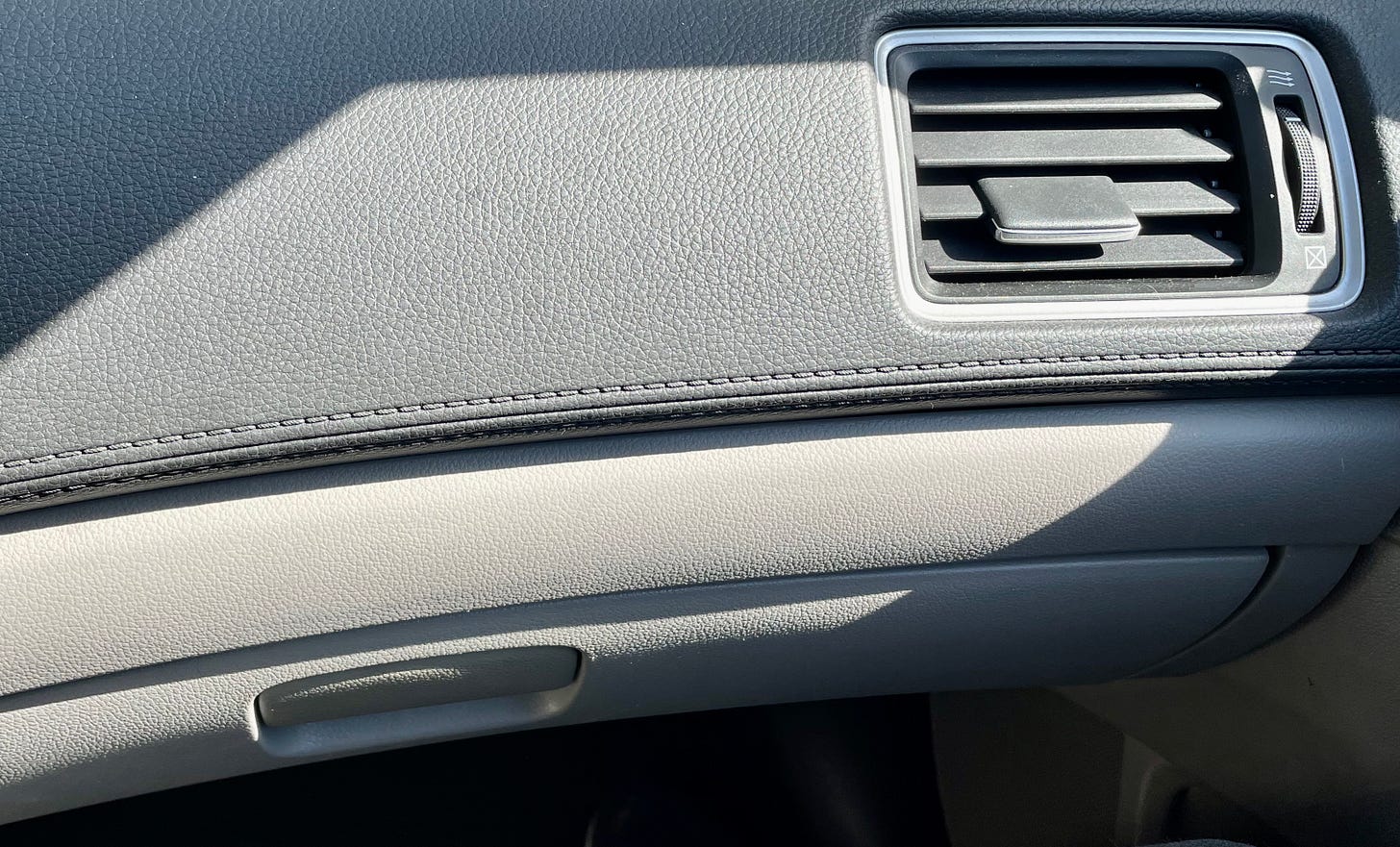The Curious Phenomenon of Faux Stitching
Manufacturers are trying to simulate a handcrafted look, even on products that we’d never expect to be handcrafted in the first place.
My work boots, shown above, have a lot of sewn elements, as you can see from all the visible stitching. The various sections of leather are sewn to each other, the cuff of foam padding is sewn to the leather, the brand-name label is sewn to the tongue, the size label is sewn to the inner tongue, and so on.
But if we look more closely, it becomes apparent that the manufacturer would like us to think that another element has been sewn: the sole, whose perimeter is rimmed by a molded pattern that’s meant to look like stitching:
In shoemaking terms, this pattern is meant to create the illusion of a welted sole (also called a Goodyear welt, perhaps best known for its use on Doc Martens); in lay terms, the faux stitching serves as a proxy for old-fashioned manufacturing values. If we zoom in even closer, you can see that the faux stitches even include a bit of texture, so they look more like wound thread:
While true welt stitching can still be found on some high-end shoes and boots, I’ve noticed that the faux stitching has become increasingly common in recent years. And it’s not limited to footwear — my 2014 Honda Civic has some faux stitching running across the faux leather dashboard:






